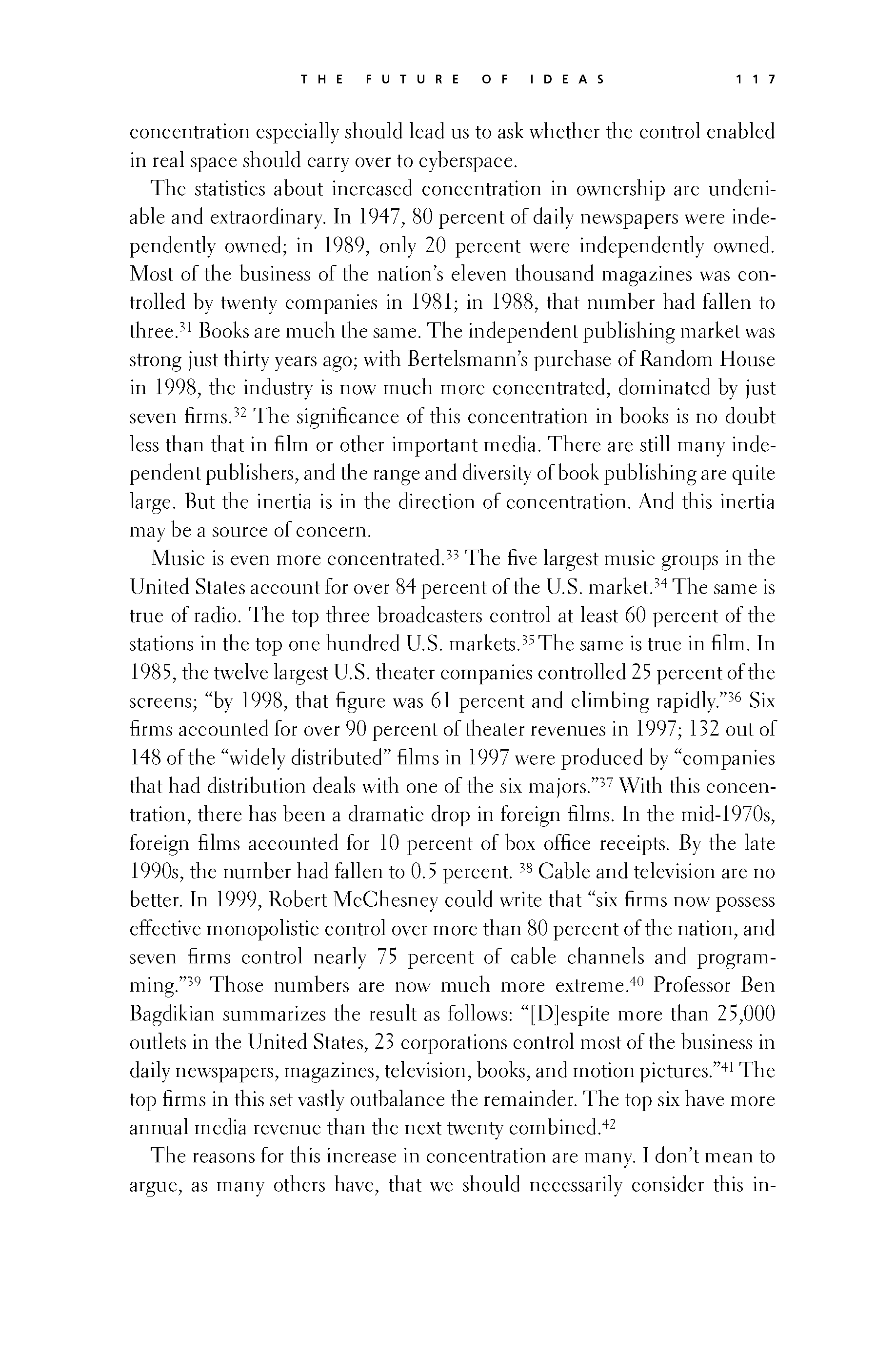 p116 _
-chap- _
toc-1 _
p117w _
toc-2 _
+chap+ _
p118
p116 _
-chap- _
toc-1 _
p117w _
toc-2 _
+chap+ _
p118
concentration especially should lead us to ask whether the control enabled
in real space should carry over to cyberspace.
The statistics about increased concentration in ownership are undeni-
able and extraordinary. In 1947, 80 percent of daily newspapers were inde-
pendently owned; in 1989, only 20 percent were independently owned.
Most of the business of the nation's eleven thousand magazines was con-
trolled by twenty companies in 1981; in 1988, that number had fallen to
three.[7-31] Books are much the same. The independent publishing market was
strong just thirty years ago; with Bertelsmann's purchase of Random House
in 1998, the industry is now much more concentrated, dominated by just
seven firms.[7-32] The significance of this concentration in books is no doubt
less than that in film or other important media. There are still many inde-
pendent publishers, and the range and diversity of book publishing are quite
large. But the inertia is in the direction of concentration. And this inertia
may be a source of concern.
Music is even more concentrated.[7-33] The five largest music groups in the
United States account for over 84 percent of the U.S. market.[7-34] The same is
true of radio. The top three broadcasters control at least 60 percent of the
stations in the top one hundred U.S. markets.[7-35] The same is true in film. In
1985, the twelve largest U.S. theater companies controlled 25 percent of the
screens; "by 1998, that figure was 61 percent and climbing rapidly."[7-36] Six
firms accounted for over 90 percent of theater revenues in 1997; 132 out of
148 of the "widely distributed" films in 1997 were produced by "companies
that had distribution deals with one of the six majors."[7-37] With this concen-
tration, there has been a dramatic drop in foreign films. In the mid-1970s,
foreign films accounted for 10 percent of box office receipts. By the late
1990s, the number had fallen to 0.5 percent. [7-38] Cable and television are no
better. In 1999, Robert McChesney could write that "six firms now possess
effective monopolistic control over more than 80 percent of the nation, and
seven firms control nearly 75 percent of cable channels and program-
ming."[7-39] Those numbers are now much more extreme.[7-40] Professor Ben
Bagdikian summarizes the result as follows: "[D]espite more than 25,000
outlets in the United States, 23 corporations control most of the business in
daily newspapers, magazines, television, books, and motion pictures."[7-41] The
top firms in this set vastly outbalance the remainder. The top six have more
annual media revenue than the next twenty combined.[7-42]
The reasons for this increase in concentration are many. I don't mean to
argue, as many others have, that we should necessarily consider this in-
[[117]]
p116 _
-chap- _
toc-1 _
p117w _
toc-2 _
+chap+ _
p118